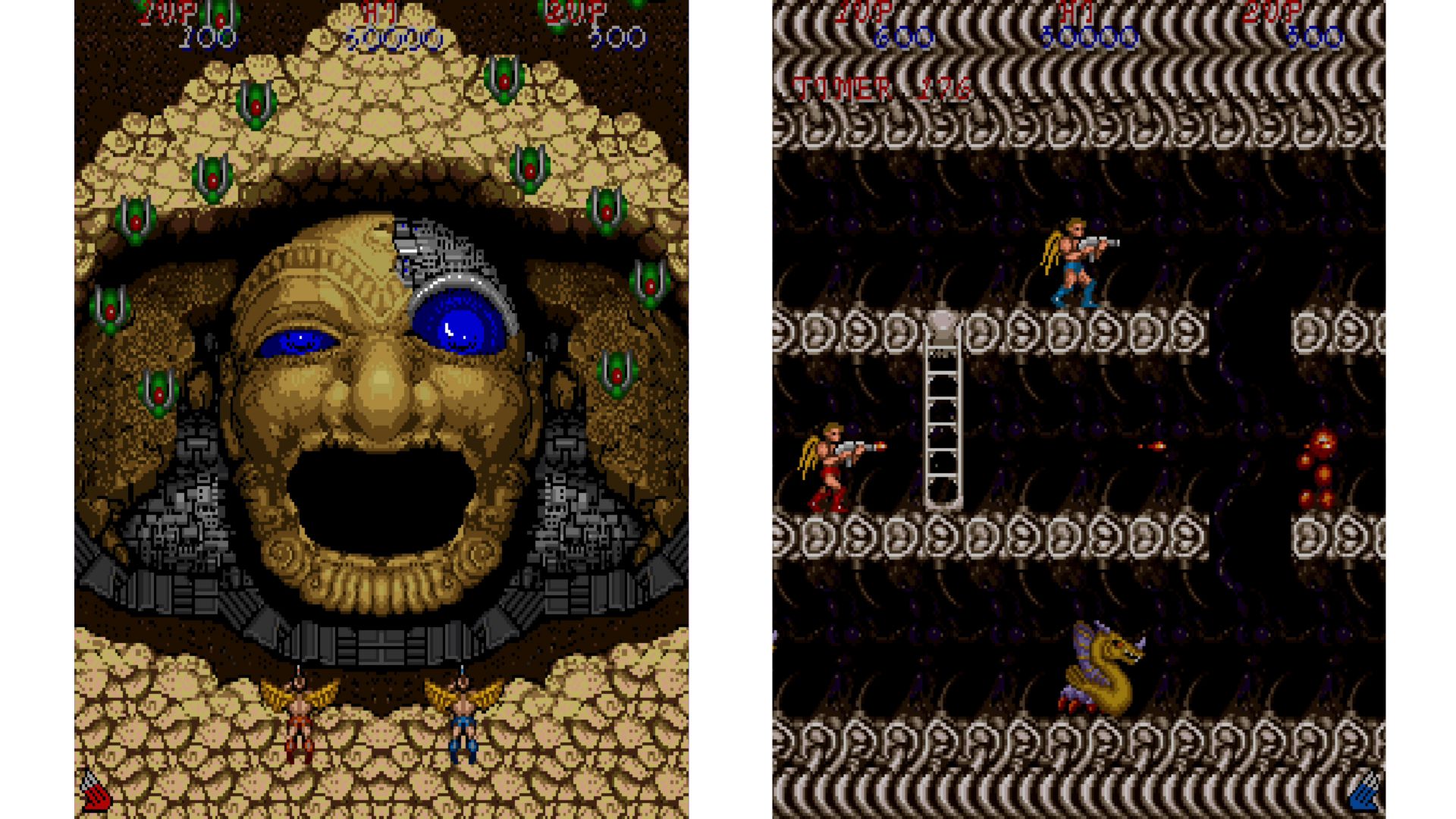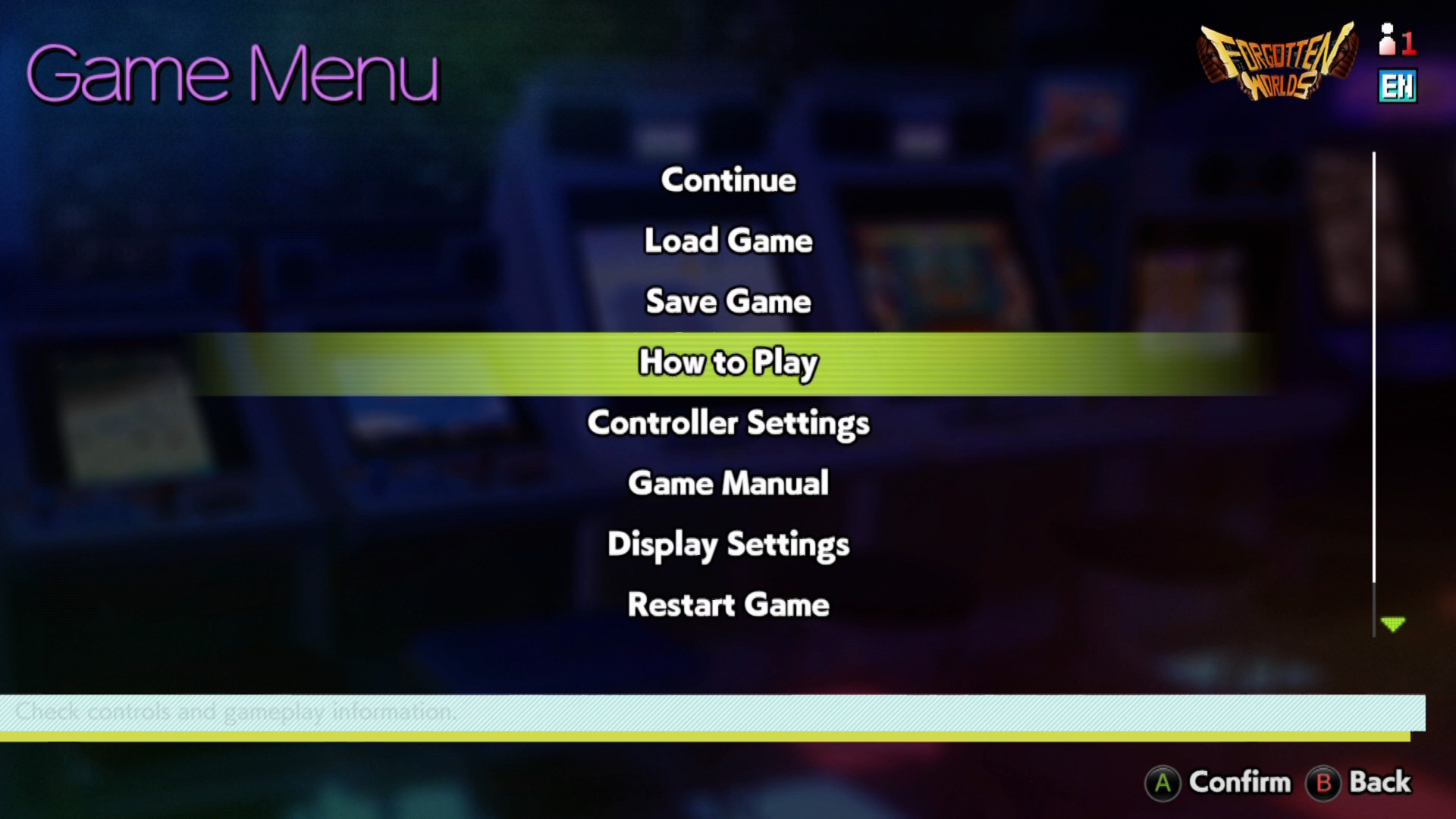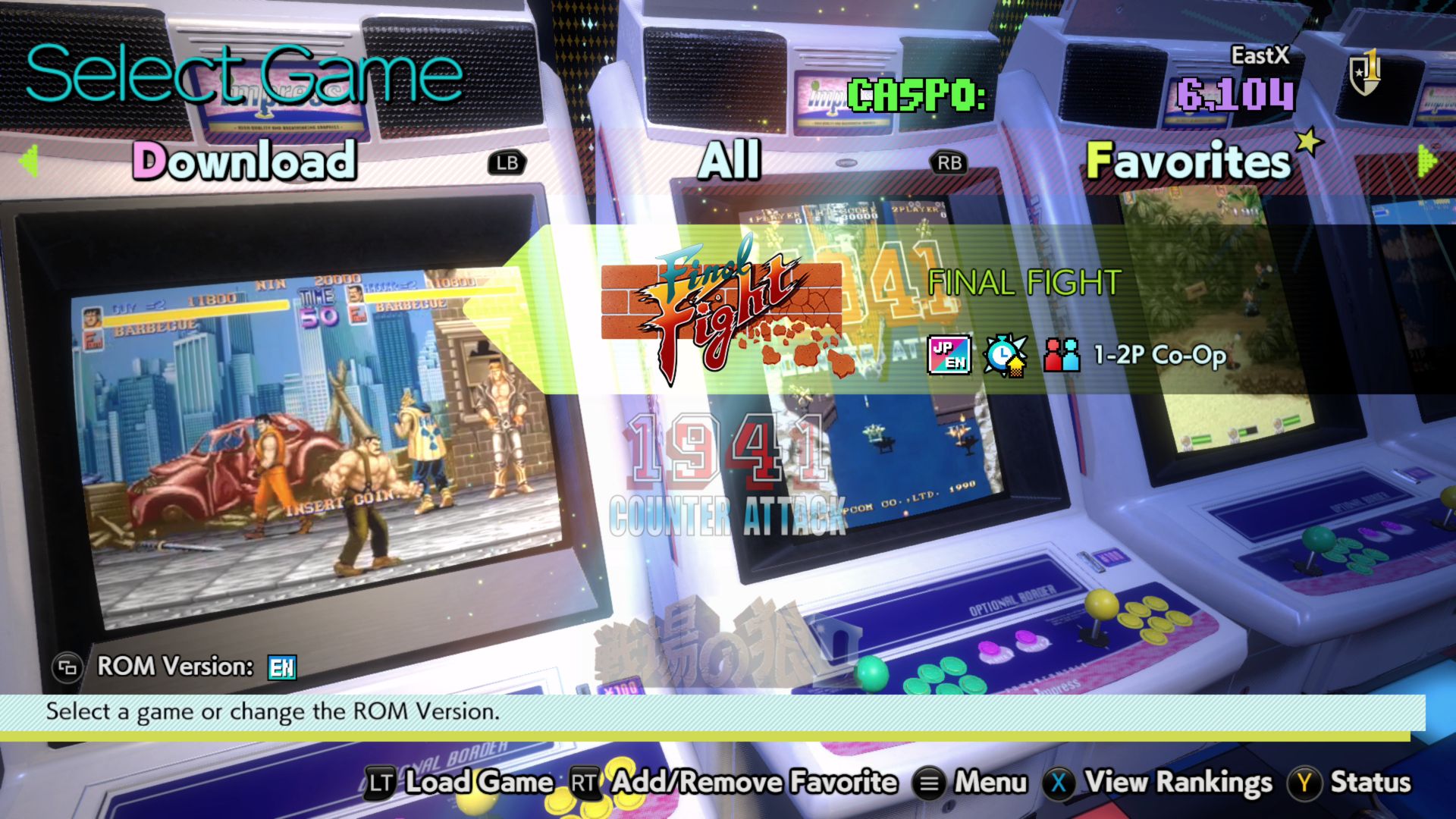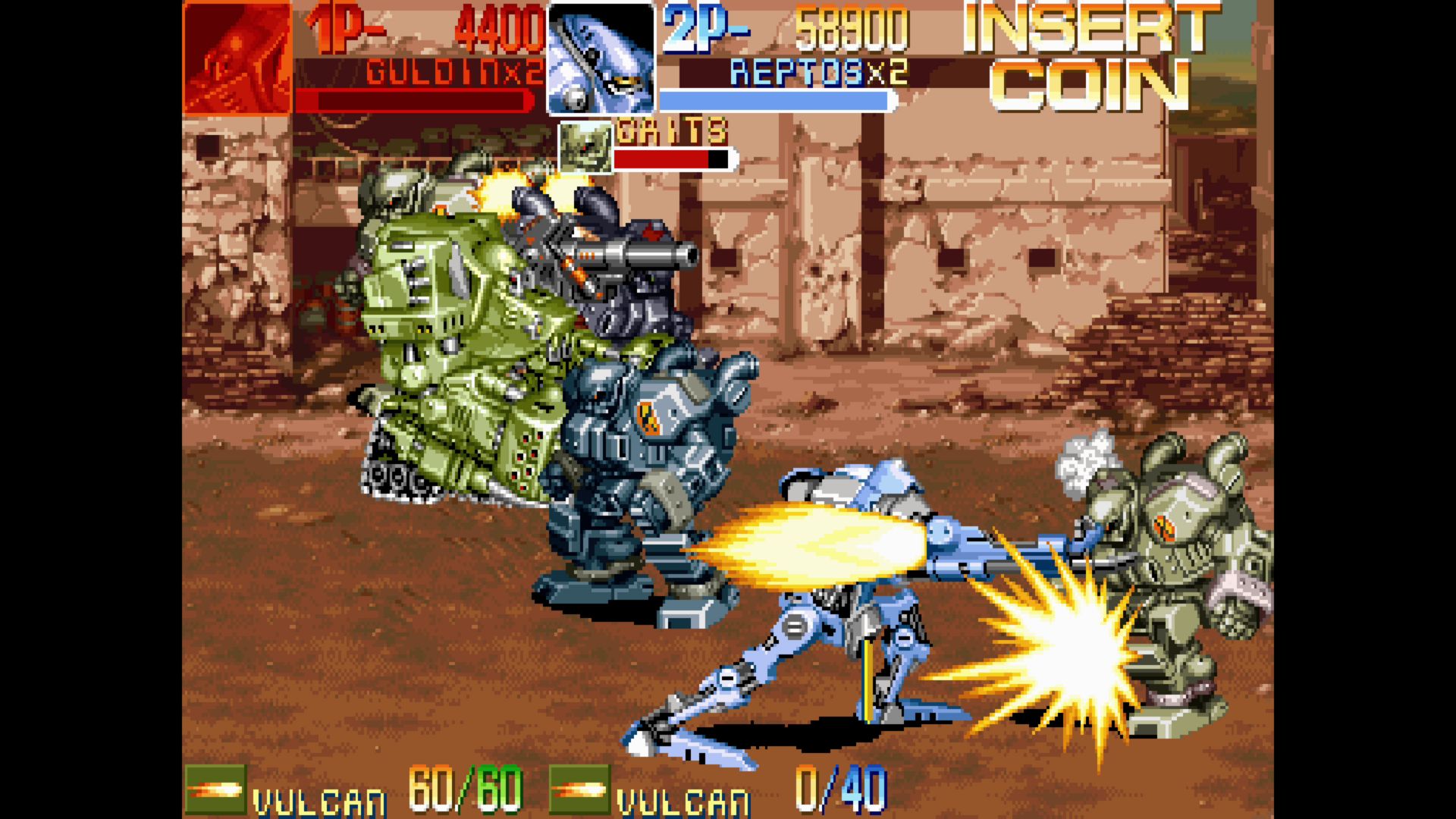
Legendary Wings (two screenshots)
Non-co-op games:
- 1942 (1984)
- Bionic Commando (1987)
- Commando (1985)
- Cyberbots: Fullmetal Madness (1995)
- Ghosts 'n Goblins (1985)
- Ghouls ‘n Ghosts (1988)
- Pirate Ship Higemaru (1984)
- Section Z (1985)
- Street Fighter II: Hyper Fighting (1992)
- Street Fighter II: The World Warrior (1991)
- Strider (1989)
- Super Street Fighter II Turbo (1994)
- Tatakai no Banka (Japanese version of Trojan, 1986)
- Vulgus (1984)
Features

Capcom Arcade Stadium is more than just a collection of arcade classics. The main software is presented as a virtual arcade, complete with 3D replicas of cabinets. Each individual game in the arcade can be assigned one of four cabinet styles. Impress, Status, and Mini Cute are Japanese styles, and Upright is the international style. Individual cabinet art is not available for the Upright style, which is disappointing. Capcom’s distinctive “Big Blue” cabinet styles are also missing, oddly.
Games can be played with several customizable display options. The 3D frame actually displays the game image on the 3D cabinet, which looks great but makes the screen a bit small. 2D allows games to be played in three selectable sizes, with either black borders or one of several unlockable wallpapers. American bezel artwork is sadly missing as an option, but the available wallpapers are sufficient. Seven scanline filters can be applied, and players can even choose to rotate the display to a vertical “tate” orientation for any and all games. These settings can be chosen for individual titles or applied to all of them at once.
The non-display options are impressive too. Every game has a digital manual that explains its mechanics, and the fighting games have moves lists too. All games have difficulty settings, and the game speed can even be turned up or down. During gameplay, players can create save states, cycle between speed settings at the touch of a button, or hold a button to temporarily increase or decrease speed. Pretty much any emulation option you could want is here, though the actual menus aren’t always intuitive.
Each game can be played in free play or single-player “Score Challenge” modes. Score Challenge restricts the gamer to one credit and provides a score target to beat. Each week, “Special Challenges” are offered for four different games, presenting unique settings and tasks for the player. Unfortunately, games can’t be sorted by special challenges; you have to read the Notices section to see what’s being offered and when.

On that note, sorting and selecting games is much clunkier than it should be. Games can be categorized by all or by genre: action, shooter, and fighting. There’s no beat ‘em up genre sorting even though six games in this collection fall into that category. Within each category, games are sorted only by release date, not alphabetically. However, release dates aren’t even shown when highlighting games, creating the appearance of random rather than logical organization. The lack of alphabetical organization is a huge, unbelievable oversight. Additionally, a few games in this collection only have Japanese or English versions. Gamers must press a button to toggle between the Japanese and English versions list to choose those specific titles – a bit of a hassle.
Despite the inexplicable sorting issues and cumbersome menus, Capcom Arcade Stadium is a very impressive collection. With 32 arcade classics, 18 of which support local co-op, retro gamers will get ample bang for their buck here. It’s true that some of these games appear in other collections. Battle Circuit and Final Fight, for instance, show up in the Capcom Beat ‘em Up Bundle. That collection has online play, something lacking in this one. Still, this compilation is much more comprehensive and offers plenty of unique options not found in Capcom’s other collections. This Arcade Stadium offers an instant arcade collection, and now, Capcom Arcade 2nd Stadium is available for gamers who crave even more arcade goodness.

Powered Gear/Armored Warriors
Capcom Arcade Stadium is free (with the 2-player co-op shoot 'em up 1943: The Battle of Midway included) to download on Xbox, PlayStation, Switch, and Steam. Additional games and packs cost extra, with the Capcom Arcade Stadium Packs 1, 2, and 3 Bundle selling for $39.99.
An Xbox review code was provided by the publisher.
Verdict
Co-Op Score
Overall
The Co-Op Experience: Team up on the couch in those titles that support it. 1943: The Battle of Midway, a shoot 'em up, comes with the free base game and supports 2-player local co-op. Other games must be purchased individually or in bundles, and may support 2-4 local players.
Co-Optimus game reviews focus on the cooperative experience of a game, our final score graphic represents this experience along with an average score for the game overall. For an explanation of our scores please check our Review Score Explanation Guide.